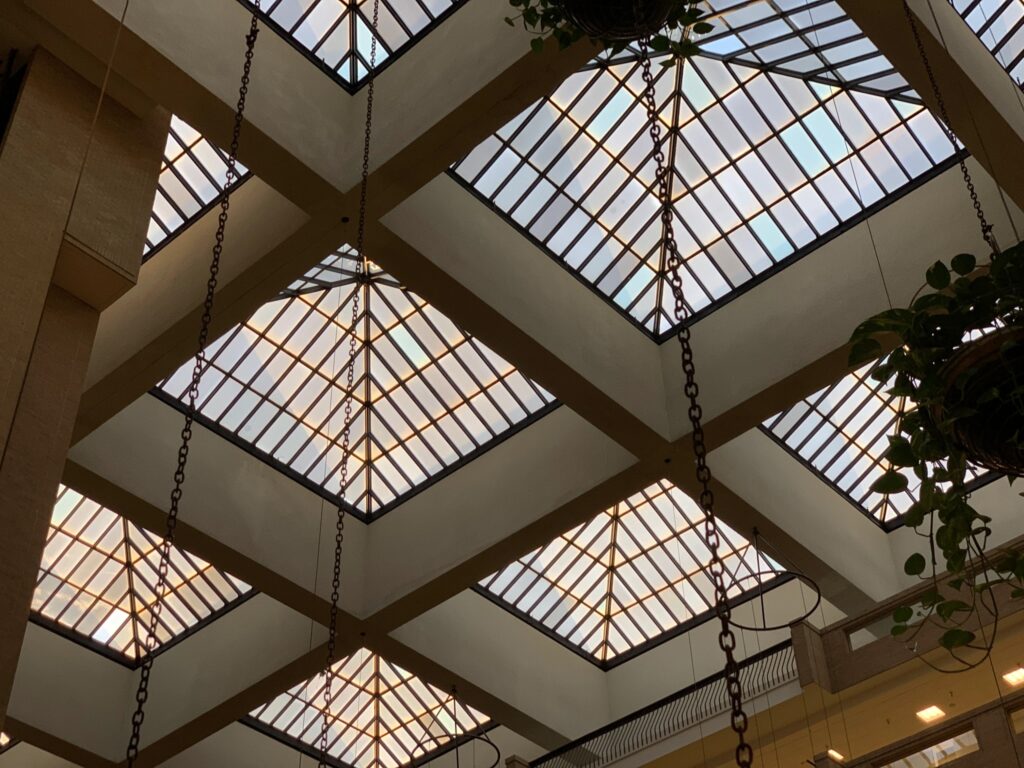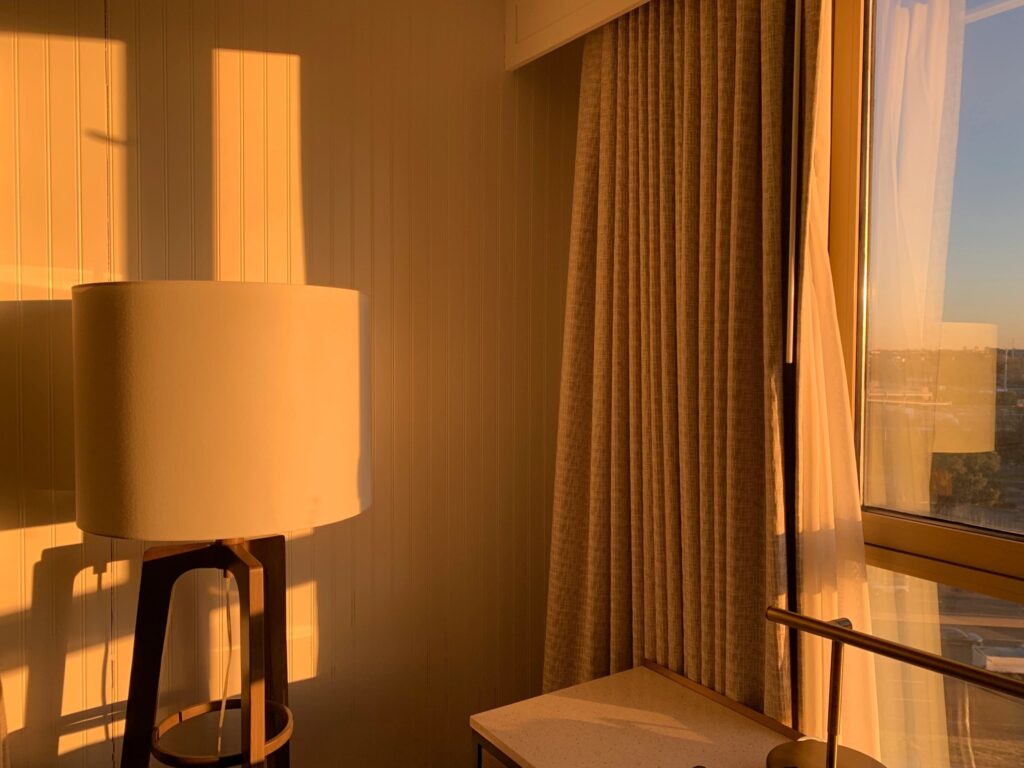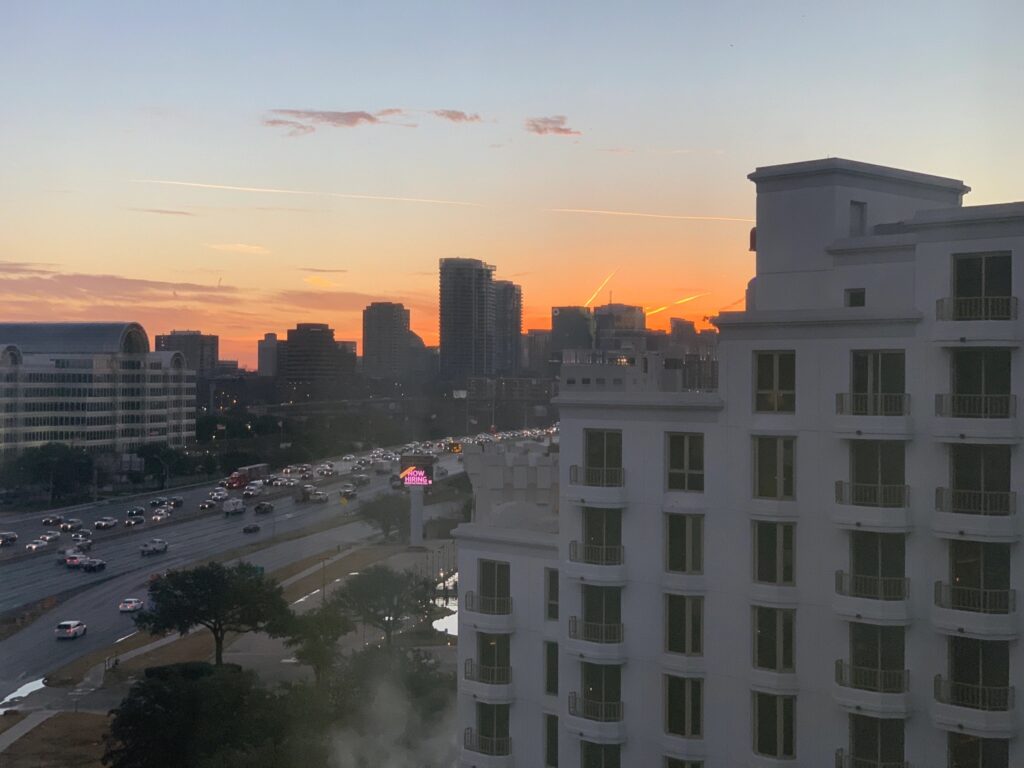What is the best color temperature for electric light? My answer is “all of them.” In this Gear Talk post I share photographs from a single business trip to Dallas, Texas. Call it a Lightseeing post…and I saw warm-dim everywhere.
I think warm-dim should be a minimum standard, not an add-on. To explain, I’m going to get a little geeky… and then I’m going to make it simple. Or at least try.
Lighting geeks like me love to dig into technology, science, widgets, and all things gear related. From a charitable point of view, you could say we just really want to know our tools well, like a painter knows brushes and pigments or a carpenter knows saws and hammers. And yes, less charitably, I also like shiny toys that light up. Some things never change.
We talk to our clients daily about light and it is not always easy. Twenty years ago, we went to the store and bought a new bulb when it burned out (which happened a lot). Today, we go to the store, look over hundreds of choices, get that deer-in-the-headlight look, finally make a purchase in which we have almost no confidence, and then go home and hope it magically does what we want it to. Isn’t progress great?
2700°K? 3000°K? High CRI? Smart? Tunable? Warm Dim? What do these even mean? I tried to make it easy for my friends to buy good light bulbs by blogging about it, but here we are a few years later and clients are still wondering why they need to pay “extra” for warm-dimming LEDs.

Warm-dimming is the most common term for an LED technology that slowly shifts the color of the light warmer – more amber – as a light is dimmed. Manufacturers were quick to market it as “vintage dim” and other catchy phrases that point out warm-dim’s similarity to how our old incandescent bulbs dimmed. Because incandescent bulbs literally burned a filament, the “flame” got more orange as less electricity passed through the filament. The light got “warm,” as it dimmed.
I confess I thought that was pretty cool and jumped on board. I was missing the warmth of outdated light bulbs and I desperately wanted to go back to the incandescent days.

Now I want to go back even further to a time before electric light. I want to go back to campfires, oil lamps, and lanterns. Why? Because my body wants to relax, and there is nothing like the light of a fire to comfort me. Warm-dimming technology is what gets me there.
Forget that warm-dim LEDs approximate the behavior of an incandescent bulb, those energy-hogging relics of the Edison age. Start thinking about warm-dim LEDs as a way to get more candlelight in a candlelit dinner. More firelight from the hearth. More soft glow from a lantern. Why do we still put candles on our table? Or, to put it another way, why do we buy warm-dim lights that burn up and melt wax onto our table but leave our light bulbs stuck in static white?

And then I want to go back even further in history. To before flames, to sunrise and sunset. What happens when the sun goes down? It shifts to amber. What makes the most beautiful sunrise? The light is more amber, the sky more colorful. The photos in this post are from a recent business trip to Dallas, Texas. I did not stop to notice and photograph white light. I stopped to notice warmth.
Please stop considering warm-dim as an optional extra. Rename it “sunset dimming” and embrace the capability to mimic what happens at the most beautiful, most relaxing, most romantic part of the day.
Geeky Note: Not all warm-dim fixtures and bulbs are created equal, but most are better than fixed white. My favorite sources avoid a linear dimming curve and adopt a more logarithmic curve that stays white a little longer. I’m sorry that getting good light is so confusing, but I suppose that is why I have a job….

